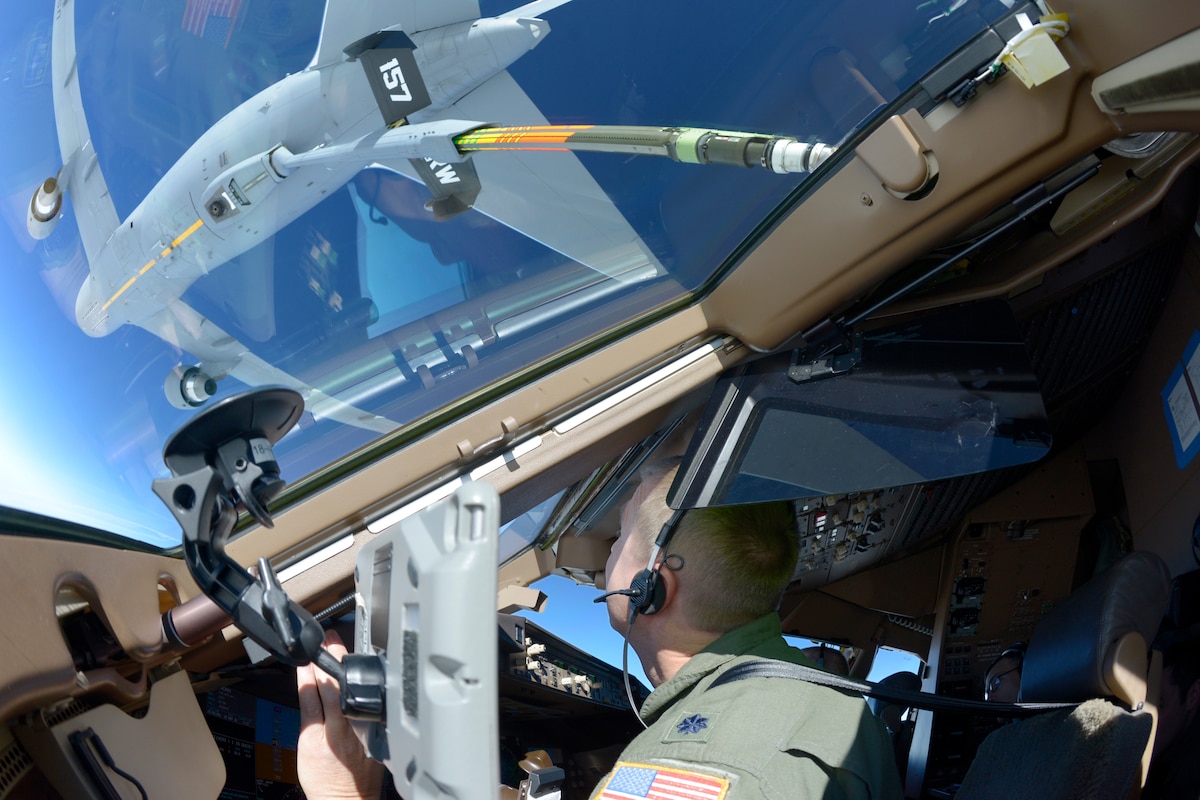The US Air Force (USAF) flew its KC-46 aerial tanker hallway around the globe and back for 36 hours non-stop between November 16-17, marking the longest such mission in the history of Air Mobility Command.
https://youtu.be/ui2NftuINZE
The record-breaking sortie was a part of the Air Mobility Command’s (AMC’s) effort to explore new ways to use its aircraft. The KC-46A Pegasus that conducted the sortie belonged to the 157th Air Refueling Wing (ARW)
“This extended mission is yet another example of capable Airmen taking charge and moving out to accelerate our employment of the KC-46A,” said General Mike Minihan, AMC commander. “This total force mission boldly highlights the imperative to think differently, change how we do business, and provide options to the joint force.”
The point-to-point, 36-hour, 16,000-mile (around 25,700 kilometers), multi-crew, total force sortie started and ended at Pease Air National Guard Base in New Hampshire.
A @157ARW KC-46A Pegasus flew a record, nonstop mission halfway across the globe and back.
Spanning 36 hours and 16,000 miles, this #TotalForce, multi-crew sortie was the longest such mission in @AirMobilityCmd history. 🔗https://t.co/G7V2GxcQVB pic.twitter.com/HMmwTBS5xX
— Air National Guard (@AirNatlGuard) November 22, 2022
The KC-46A left the east coast of the US on the morning of November 16. It flew west across the country and out into the Pacific Ocean, where it overflew Hawaii and crossed the International Dateline to Guam before returning to New Hampshire, where it landed on the evening of November 17, 36 hours to the minute after the plane had taken off.
A KC-46A can be refueled in flight; therefore, it can persist in operations areas to provide sustained support to warplanes.

The latest air mobility endurance mission demonstrated these capabilities — taking on fuel thrice throughout the flight and delivering gas to F-22 Raptors while flying a closed-loop pattern off the coast of Hawaii.
USAF Relentlessly Working To Develop Innovative Ways For Employing Its KC-46A
Under General Minihan’s command, the AMC is relentlessly working to find new ways to employ current assets in anticipation of a future fight with a high-end peer competitor such as Russia or China.
In October, the USAF flew a KC-46A belonging to the 22nd ARW with only one pilot to validate procedures for operating with a limited aircrew for certain potential high-end combat scenarios.
Such an employment concept enables the KC-46 to fulfill its primary mission with a reduced crew complement when required to rapidly launch aircraft with threats inbound or extend long-range operations in the air with offset crews.
“In wartime, airfields are static targets, as are any aircraft on the airfield when an attack is inbound. But once airborne, the aircraft is a mobile platform capable of maneuvering and continuing to provide mission capability for the combatant commander,” said Col. Nate Vogel, 22nd ARW commander.
The mission was conducted inside military test airspace and involved two KC-46 sorties, with only a single pilot and a boom operator. The KC-46’s basic crew comprises a pilot, a co-pilot, and a boom operator, with additional aircrew added for long-duration flights.
The first sortie flew the pattern only, followed by a debrief and assessment. The second sortie immediately followed and completed an entire mission profile, including ground operations, preflight tasks, takeoff, aerial refueling rendezvous, air refueling on-load and offloading, landing, and debriefing.
The boom operator was co-located in the cockpit with the pilot, except while performing boom operations.
“I have been very clear with my team: victory will be delivered on the back of the mobility air forces, and doing so means taking a hard look at every tool we have at our disposal,” said Minihan after the mission. “The dynamics of the future operating environment require us to think in ways we might not usually think,” he said.
KC-46 Tanker Approved For Combat Missions
The KC-46 Pegasus is a modified version of the Boeing 767 airliner, designed to replace the aging KC-135 Stratotanker, also made by Boeing. The aircraft can refuel planes at a rate of 1,200 gallons per minute with the help of its 55-foot fly-by-wire refueling boom.
However, numerous developmental setbacks, particularly relating to its boom and vision system, that have been discussed in detail in a recent EurAsian Times article, have prevented the USAF from employing the KC-46 for a full complement of missions.
The USAF and Boeing have been working to address these issues, but some components of the tanker’s refueling system are not expected to be fixed entirely until 2025. Nevertheless, General Minihan in September cleared the KC-46 to fly various missions, including combat.
Until now, the tanker has been extensively flown on training missions and used for supporting NATO missions related to the Russian invasion of Ukraine.
Also, Israel will acquire four KC-46As from the US, which could be used in possible combat missions against Iran.
As EurAsian Times has discussed, the KC-46A can play an essential role in a potential Israeli strike on Iran. Many experts had called it the second most crucial acquisition after F-35 stealth fighters.
While Israel does have fifth-generation F-35 stealth fighters, the jets cannot fly to Iran and come back without refueling, requiring the F-35s to land at a friendly base near Iran.
With the KC-46 tanker, Israel can have around a dozen of its bomber aircraft in the air for up to 12 hours with a range of over 11,000 kilometers. This could give the Israeli military a massive advantage in any operations against Iran, located about 1000 kilometers from the Israeli borders.
- Contact the author at tanmaykadam700@gmail.com
- Follow EurAsian Times on Google News